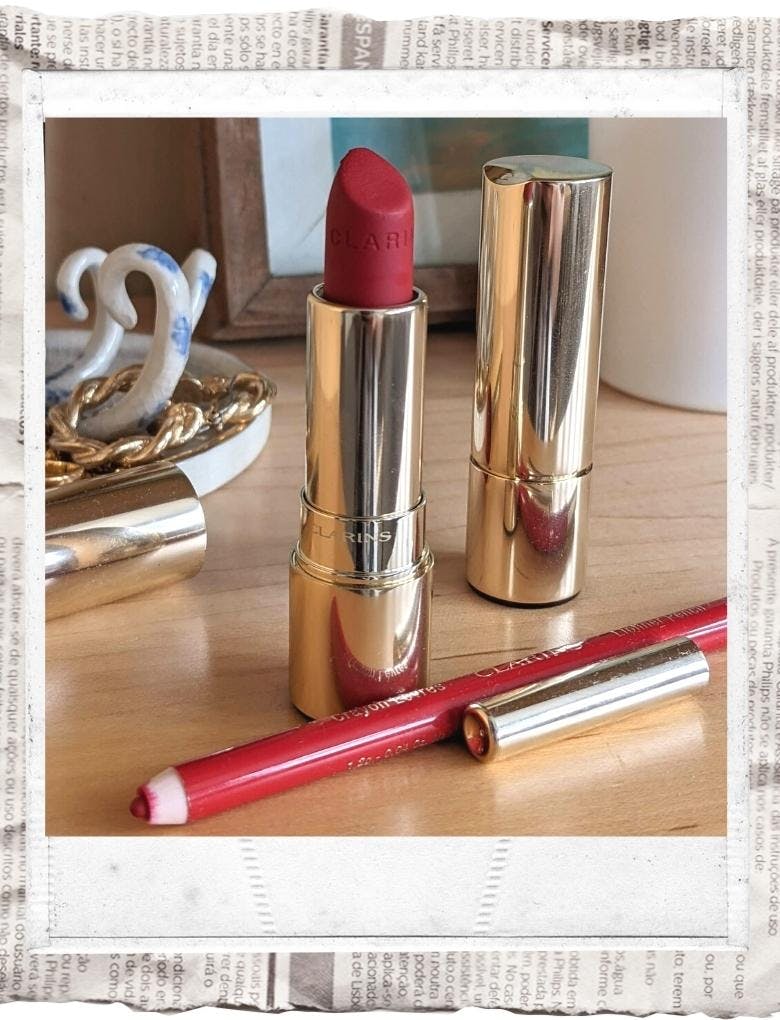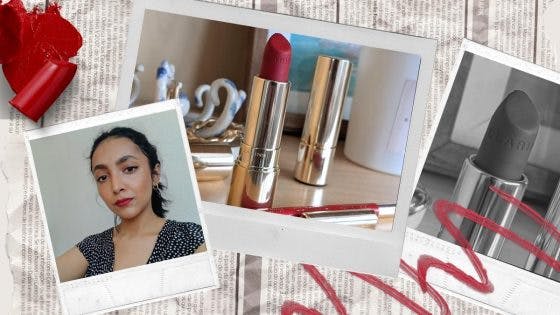A Love Letter To Red Lipstick
5 minutes read
My mother never wore red lipstick. Growing up, I remember watching her swipe on muted mauves and sheer pinks. Red was too bold, too extravagant, even a bit strange.
But when I noticed someone walking down the street wearing a perfectly painted red lip, I was fascinated. There was something so unapologetic about it – it wasn’t attempting to appear natural in any way, as many other popular make-up practices do. And it was always so precisely and artfully applied.
“Painting on a red mouth has the uncanny knack of seeming to belong to antiquity and tradition whilst simultaneously appearing decidedly modern and daring,” writes make-up artist Lisa Eldridge in her book Face Paint: The Story of Make-up.
Wearing red lipstick has always been a polarising make-up choice and represents a myriad contradictions. You may love or hate it, but few are indifferent towards it – and that’s how it’s been throughout history.
Red lips: the forever favourite
As Eldridge noted, red lipstick symbolises both the old and the new. And in the past, it has made appearances during some crucial moments in our cultural history.
Over 2,000 years ago, the elite classes wore it in ancient Egypt and Mesopotamia. They crushed red beetles and stones to extract their carmine colour. In the centuries that followed, the general opinion on red lips oscillated, from being perceived as impolite or vulgar during certain decades to being viewed as the possessor of supernatural powers during others (in England, Queen Elizabeth I believed it could ward off evil spirits).
In the early 20th century, during the Suffragettes movement in Europe and America, women painted their mouths red as a symbol of strength. Rachel Felder, author of Red Lipstick: An Ode to a Beauty, told the BBC about the Bergen-Belsen concentration camp in Germany that the British Army liberated in 1945. “As the camp was being liberated, the British Red Cross sent in cartons of red lipstick, so the women who had been tortured, and endured so much, could begin instantly to inch back to normalcy,” she said.
There’s no doubt that red makes an impact in a way that pinks, peaches and browns never could. There are even studies that prove it. Red is, after all, the colour of blood. This is why we probably feel biologically drawn to it, especially because most traditional make-up practices try to create the illusion of health – concealing tired under eyes, adding a flush to cheeks and pigment to pale lips.
So, painting our lips the colour of blood naturally makes an impact.
Finding your red

The first luxury beauty purchase I made (from painstakingly saved earnings) was a red lipstick. The one I bought was a matte, brick red shade. I treasured it dearly. But when I wore it, something didn’t look right. Instead of flattering my skin tone, it clashed awkwardly against it. So I dabbed away most of the pigment to make it work, creating a sheer stain instead of wearing it at full opacity.
But the scary thought that crossed my mind was this: maybe red isn’t my colour?
Of course, that wasn’t true. I know that now. Because red suits everyone. If it looks wrong, you’re using the wrong shade. Brick red wasn’t my colour.
Your skin tone, undertone and the natural colour of your lips can all affect how a shade looks on you. The theory is that if you have a cool undertone, cooler shades of red will flatter you and vice versa for warm undertones. You can read about it here: How to choose the perfect red for your skin tone.
In my opinion, it’s all about trial and error. After that failed attempt, I swatched and tested many shades – from orangey crimsons and pinky tones to dark jammy reds. I eventually concluded that deep shades of red that lean slightly towards the cooler end of the spectrum suit me best. And I gravitate towards matte finishes. From the Clarins range, the Joli Rouge Velvet in Deep Red, £23, is perfect for me.
How to wear it
Once you own a red you love, it’s an endless resource. There are so many ways to wear it. For example, I love using reds to create soft stains (pat the pigment on the lips over some lip balm). Or go all the way to paint a saturated scarlet lip.
I start with a lip liner (I like the Lipliner Pencil in 06 Red, £19) to trace my lip shape and then lightly fill in the colour. Then I apply the lipstick straight from the bullet, but you could also use a lip brush for more precision. Blot with a tissue and repeat.
Sometimes, if I want to soften the look, I use a small clean eyeshadow brush to blur the edges of the lip slightly. You could also dip the brush in a little translucent powder to feather away the harsh edge for a more editorial, blurry red lip.
Read: 7 Red Lipstick Looks: New Ways To Wear This Hot Hue
July 29 is National Lipstick Day. And while it may seem like the most trivial milestone, spending an evening penning down my thoughts on lipstick turned out to be a joyfully calming exercise – I highly recommend it. Although using the occasion to clear out your make-up drawers (and discard all the old, expired lipstick you’ve been holding on to) is also a brilliant idea.
– Nishita Fiji
Sign up for our newsletter
We will keep you in the loop for special offers, exclusive gifts and product news.

